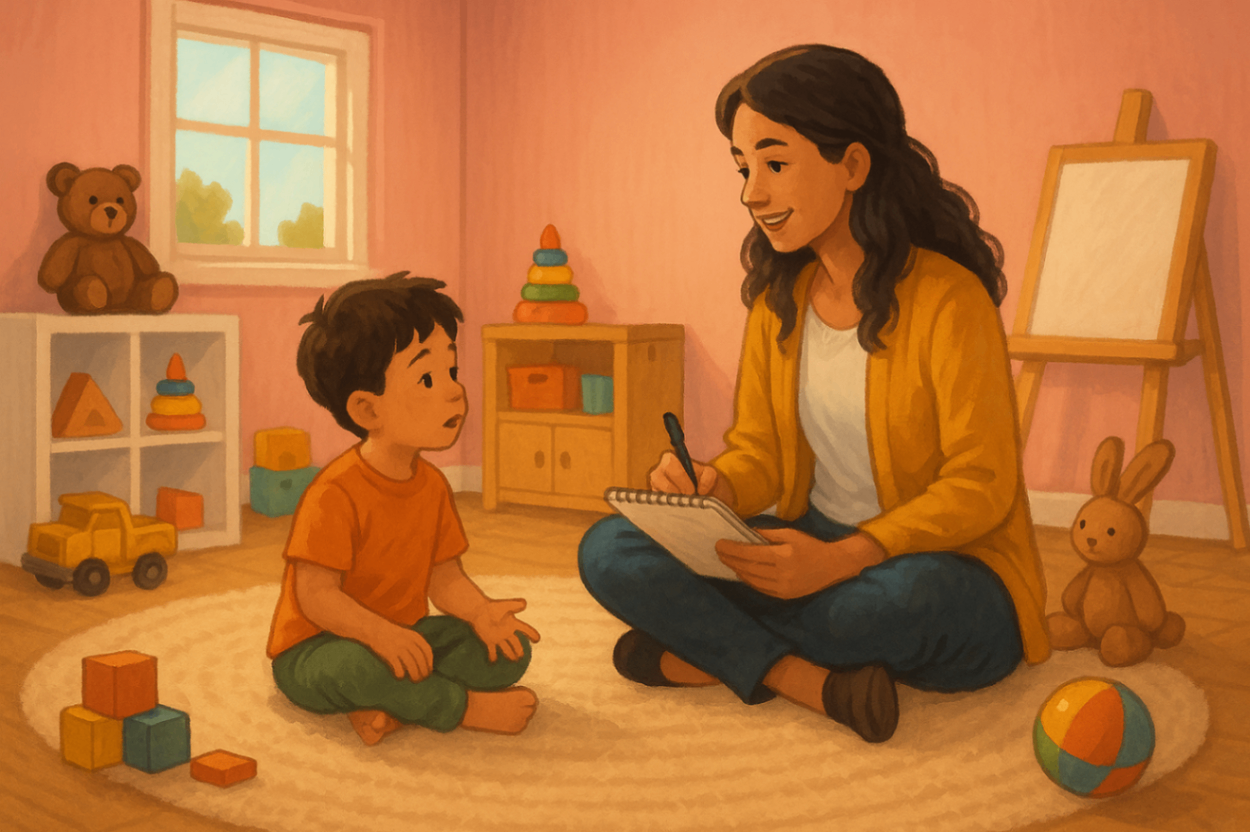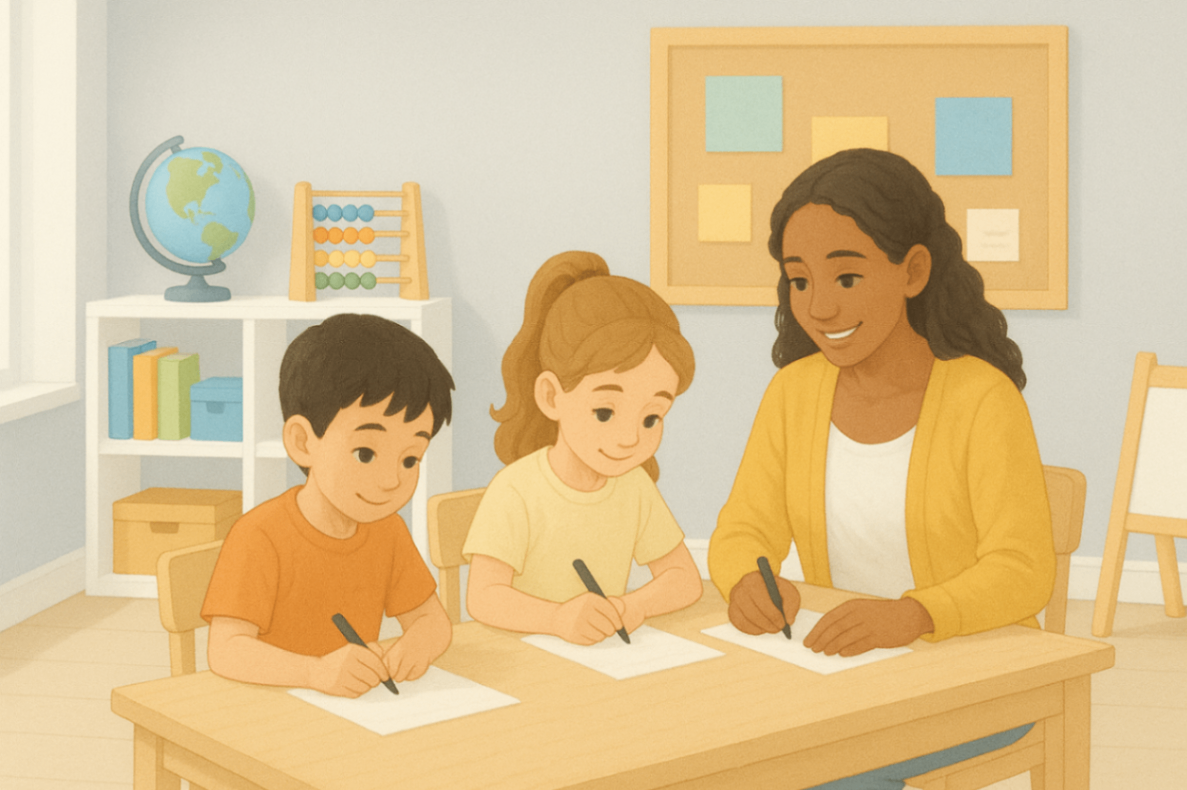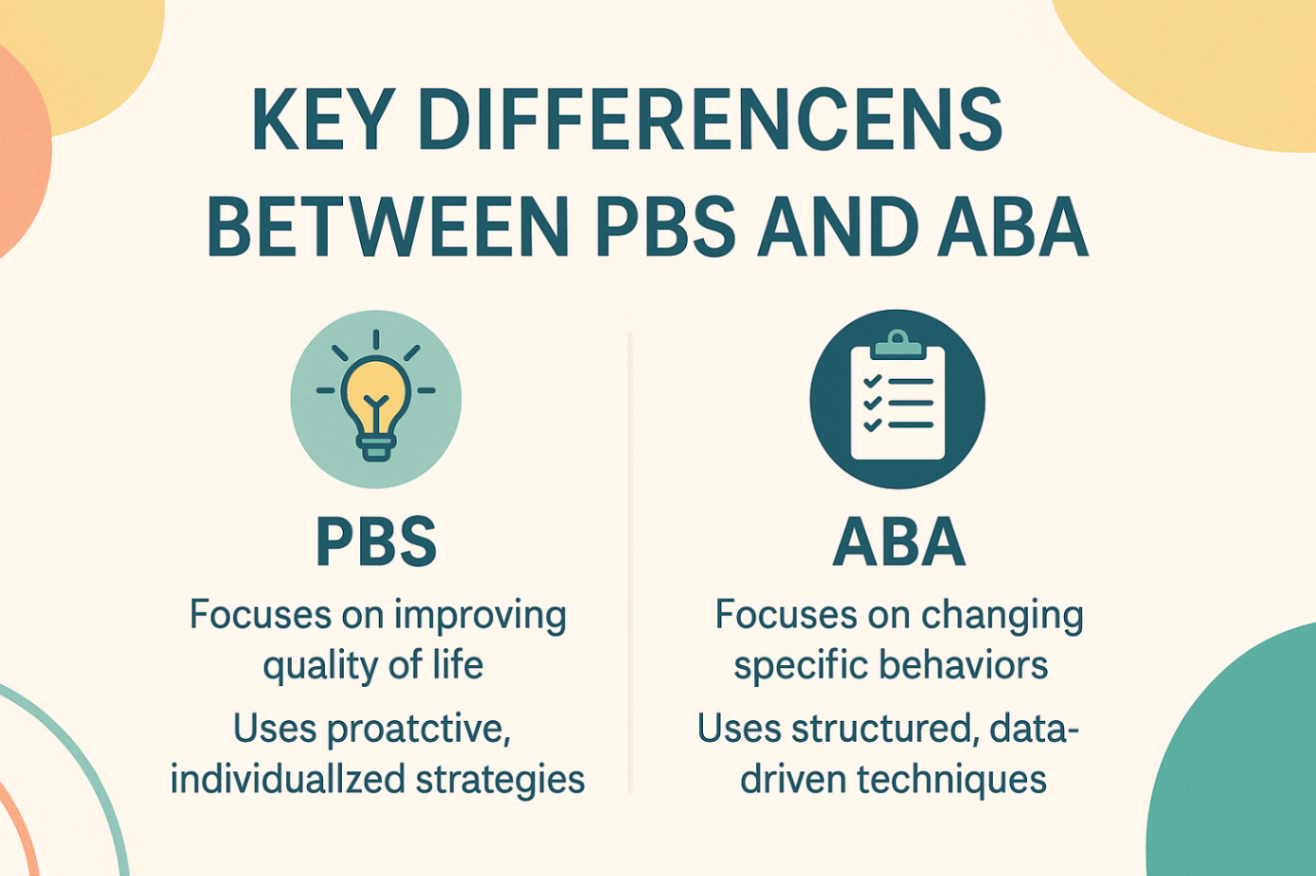
pbs vs aba therapy: what’s the difference for children under ndis?
23 June, 2025

Key Highlights
-
Positive Behaviour Support (PBS) adopts a holistic approach, emphasising naturalistic settings and individuality, while Applied Behaviour Analysis (ABA) uses a structured, scientific methodology to shape behaviour.
-
ABA principles focus on behaviour management through reinforcement-driven techniques to improve skill development and social inclusion.
-
PBS incorporates proactive strategies to reduce behavious of concern, fostering resilience and effective communication in autistic individuals.
-
ABA adheres strictly to experimental approaches, whereas PBS promotes flexibility best suited to the person’s support needs.
-
Both approaches under the NDIS aim to enhance quality of life by addressing developmental disabilities and catering to individual circumstances.
Introduction
Choosing the right behavioural therapy for your child under the NDIS can feel overwhelming—especially when faced with terms like Applied Behaviour Analysis (ABA) and Positive Behaviour Support (PBS). While both are evidence-based approaches used to support children with developmental disabilities such as autism, they differ in how they’re delivered, the goals they prioritise, and how families are involved in the process.
ABA therapy is structured and skills-based, focusing on shaping specific behaviours through reinforcement techniques. In contrast, PBS takes a broader, more person-centred view—looking at the reasons behind behaviours and creating customised plans that improve quality of life across settings.
Understanding the key differences between PBS and ABA empowers families to make informed decisions about their child’s care. In this guide, we break down how each approach works under the NDIS, when one may be more suitable than the other, and what to expect from your chosen pathway.s.
Understanding ABA Therapy and PBS Under NDIS
 Applied Behaviour Analysis (ABA) and Positive Behaviour Support (PBS) are two important behaviour management approaches backed by the NDIS. ABA uses scientific ways like functional assessments. This is where experts try to understand what causes certain behaviours to happen. The goal is to teach useful skills and change behaviour with methods guided by research and facts.
Applied Behaviour Analysis (ABA) and Positive Behaviour Support (PBS) are two important behaviour management approaches backed by the NDIS. ABA uses scientific ways like functional assessments. This is where experts try to understand what causes certain behaviours to happen. The goal is to teach useful skills and change behaviour with methods guided by research and facts.
Positive Behaviour Support (PBS) started because ABA could sometimes be too strict, especially with the use of punishment. PBS uses a person-centred, holistic approach. It looks at the whole person and their life. Positive behaviour support focuses on the unique needs of each person. It welcomes a natural setting and supports positive behaviour in autism therapy. It also uses steps that stop problems before they start. This helps make sure everyone feels included and safe.
Not sure what PBS really is? This article explains the fundamentals of Positive Behaviour Support under NDIS.
Defining Applied Behaviour Analysis (ABA)
Applied Behaviour Analysis, or ABA, is a way to help people change or improve how they act. This is based on how people learn and behave. ABA uses ideas like positive reinforcement to help someone get better at new skills. It also uses behaviour analysis to understand why someone acts a certain way. To practice in this field, individuals often seek certification from the Behaviour Analyst Certification Board. These methods are often used for people with autism spectrum disorders or intellectual disabilities.
With ABA, the focus is on each person and what they need most. By using proactive strategies, it helps with skill development. The goal is to make daily life better for people, raise their quality of life, and guide changes in how they behave. These changes can help them live a good and fuller life.
Explaining Positive Behaviour Support (PBS)
Positive Behaviour Support (PBS) is a way of working that focuses on the whole person. It is made to help improve adherence to the quality of life for autistic people and people with developmental disabilities. The PBS model uses proactive strategies and positive reinforcement. It helps people understand the reasons behind problem behaviour, and it does not use harsh or negative methods.
By working on effective communication and meeting each person’s needs, PBS helps people learn important skills. These skills can help in schools or in the community. The main goal is to support resilience and social inclusion, so everyone can feel they belong and are part of the group.
Key Differences Between PBS and ABA
 Though PBS and ABA share aims of promoting behaviour change, their approaches differ significantly. The PBS approach applies scientific methodologies to shape behaviours using reinforcement and experimental designs, often in clinical settings. Contrarily, the success of the PBS integrates a broader scope focusing on preventative strategies, environmental redesign, and social inclusivity through naturalistic environments.
Though PBS and ABA share aims of promoting behaviour change, their approaches differ significantly. The PBS approach applies scientific methodologies to shape behaviours using reinforcement and experimental designs, often in clinical settings. Contrarily, the success of the PBS integrates a broader scope focusing on preventative strategies, environmental redesign, and social inclusivity through naturalistic environments.
The most important distinction lies in their methodology—ABA leans toward structured interventions, while PBS emphasises flexibility and holistic assessments. Here’s a comparison:
|
Aspect |
ABA Therapy |
PBS |
|---|---|---|
|
Approach |
Experimental and scientific |
Holistic and person-centered |
|
Environment |
Clinical and structured |
Naturalistic and inclusive |
|
Behavioural Focus |
Cause-and-effect modification |
Prevention via proactive strategies |
|
Use of Reinforcement |
Primary focus on reinforcement |
Includes psycho-educational those6 efforts |
|
Target Audience |
Skill-building across various levels |
Resilience through environment redesign |
Both methods contribute valuable insights toward behavioural and developmental therapies, providing options that can be tailored under the NDIS framework.
Which Approach Works Better Under the NDIS?
Choosing the best way to help your child comes down to their own needs and the support network you have. The NDIS lets you use ABA’s step-by-step methods. It uses praise and rewards to help your child build skills and manage some thinking or learning problems.
On the other hand, PBS is also used with the NDIS. This method focuses on helping children in their day-to-day life. It gets caregivers involved, too. PBS works to include everyone so that it brings about good changes for families. Whether you choose ABA or PBS depends on what your child needs to grow and the support network and tools you have.
Techniques Used in ABA for Children
ABA therapy gives kids tools for skill development and helps them become more independent. It does this by using functional behaviour assessments that find the real causes of a child’s actions. From there, ABA builds a plan that works just for them. These behavioural therapies focus on keeping things steady to help kids move forward and make social connections.
A key part of the ABA model is positive reinforcement, which is a cornerstone of effective ABA therapy. Over time, this boosts good behaviours in children. Therapists support actions that build up learning, so there are real changes in how kids act. The ABA model helps grow a child’s mind through structured ABA sessions that fit their main goals.
Some common ABA techniques are:
-
Early Behavioural Intervention: Builds basic skills in young kids.
-
Task Analysis: Breaks big tasks into smaller parts that are easier to learn.
-
Discrete Trial Training: Uses clear steps and rewards to shape the right responses.
-
Natural Environment Training: Teaches skills during real day-to-day activities.
All these ABA methods work together so a child can better talk to people and be part of the world around them. A thorough assessment shapes any therapy—learn more about how FBAs pinpoint triggers and goals before you choose PBS or ABA in Functional Behaviour Assessments Explained: What Liverpool Families Can Expect.
PBS Strategies for Supporting Positive Behaviour
PBS strategies are about building resilience, creating inclusivity, and working together with families. This way, there are fewer disruptions in daily life because the plan stops unwanted behaviours before they start by using proactive techniques. There is enough flexibility in PBS to make sure the right interventions, such interventions, fit into the person’s own environment.
Effective communication is very important in PBS. People learn how to let others know what they want or need, which helps them become more independent in their daily lives. Therapists bring in positive behavioural interventions that help children build key life skills over time. In PBS, caregivers are involved to help build a strong support network for the child.
Key PBS strategies include:
-
Enhanced Communication: Teaching good ways to express yourself.
-
Resilience-Building: Helping people deal with changes in life.
-
Environmental Adjustments: Making the space right for positive behaviours.
-
Proactive Interventions: Acting early to stop disruptions before they get worse.
PBS helps bring long-lasting and good changes that improve the child’s quality of life.
Choosing the Right Behaviour Support Pathway
Picking between PBS and ABA therapy can help shape the way your child grows and learns. Many service providers through NDIS give a range of programs to meet the needs of children’s behaviour.
Some families go with PBS because it focuses on helping children be included in their surroundings. It also highlights the role caregivers play in helping build social inclusion for their kids.
On the other hand, ABA takes a very set way to help change behaviour. People often choose it since there is strong science behind it. When you look at both PBS and ABA, think about what your child needs, what they like, and what you all want out of the therapy. It helps to talk with skilled therapists. That way, you can find the approach that fits your child’s goals and supports their growth best.
Conclusion
Understanding the differences between Positive Behaviour Support (PBS) and Applied Behaviour Analysis (ABA) is essential for parents navigating the NDIS. Each approach offers unique strengths—ABA focuses on structured, step-by-step behaviour change, while PBS takes a broader view, aiming to improve overall quality of life by addressing the root causes of behaviour.
For families in Liverpool and surrounding suburbs such as Casula, Lurnea, Moorebank, Prestons, Chipping Norton, Hoxton Park, Ashcroft, Miller, and Green Valley, selecting the right support is about more than just strategy—it's about what best suits your child’s developmental needs, learning style, and long-term goals.
Whether you're seeking to reduce challenging behaviours, foster emotional regulation, or strengthen daily routines, choosing the right approach through the NDIS can make a lasting difference in your child’s wellbeing and independence.
We’re here to help you make an informed decision based on your child’s needs, goals, and learning style. Book your consultation now.
Frequently Asked Questions
What is the main difference between PBS and ABA?
The most important distinction between positive behaviour support (PBS) and applied behaviour analysis (ABA) is in the way each one works. ABA uses a scientific approach with rules for planned actions to change behaviour. On the other hand, the PBS model brings in whole-life ideas. It aims to change behaviour ahead of time and facilitate significant behaviour change that is more open for everyone. The strategies in PBS are also made to fit a person’s support needs.
Is ABA therapy still funded by NDIS in Australia?
Yes, ABA therapy is still funded by the NDIS in Australia. The way it uses applied behaviour analysis fits with NDIS aims to help people grow and manage their daily lives. ABA is known for its use of behaviour analysis and proven behavioural intervention. These methods work to bring about good changes and be useful for those who need support.
Is PBS better for autism under NDIS?
Positive behaviour support (PBS) is a popular choice under NDIS for kids with autism. This is because it focuses on including everyone and keeping things fair. The PBS model helps a child build resilience and teaches effective communication skills. It also uses proactive strategies to stop problems before they start. This be good in the long run and lines up with important goals for child development. By working this way, there can be better outcomes for the child and their family.
Can a child switch from ABA to PBS under an NDIS plan?
Yes, the NDIS is flexible. This means children can move from ABA therapy to PBS. Parents get to try both applied behaviour analysis and PBS to help with their child’s changing needs. Because of this, a personal plan can be made with a strong support network.
What outcomes can families typically expect from each approach?
Families can look forward to a better quality of life with both ABA and PBS. ABA helps with skill development and gives you clear behaviour management tools. PBS, on the other hand, focuses on how children bounce back from tough times and works together with caregivers in various educational settings. It also looks at including everyone to make sure that every child gets the support that they need. Both ABA and PBS are helpful in their own way and work to fit what is best for each child.
.svg)












